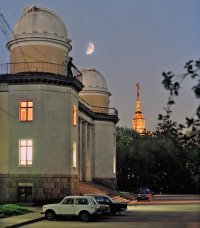Anatoly Zasov
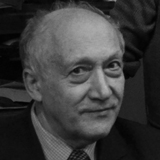
The head of the group was born on October the 3rd, 1941 in the Yaroslavl' region of Russia and twenty-three years later graduated from the Faculty of Physics in the Moscow State University. And here, in Sternbern Astronomical Institute he remained ever since, pursuing his academic career from the position of a seniour lab technician all the way up to the full professorial chair he holds now. A few dozen - or, perhaps, a hundred - students, both under- and post-graduate would consider him their supervisor. Few people in SAI can compete with Anatoly Zasov in this respect.
As he was nearing his graduation, Anatoly produced a few works on cosmology. However, at that time the field appeared so detached from observations and a chance to check any results, that ру switched to galactic structure and dynamics and star formation. Here observations are much more accessible and have indeed proved that A.Z. was right many times.
Two institutes that Prof. Zasov is most actively involved in collaboration with are the Special Astrophysica Observatory (SAO) of the Russian academy of science and the Faculty of Physics in the Volgograd sate university.
PhD (1970), DSc. (1989), Professor of astrophysics and stellar astronomy at the Faculty of Physics in MSU (1990). Member of the Scientific board of SAI. Laureat of the State prize (2003), prize of the Astronomical society (1996), II Lomonosov prize (1996). IAU member (1977). Member of the European and Euro-Asian astronomical societies (1990). Full member of the International academy of sciences in the Tertiary school (1994). An organizer of the Russian annual astronomy olympics. Member of the Editorial board of "Физика в школе" (Physics in School) journal.
Some recent publications:
- Zasov A. V., Smirnova A. A. The Gas Content in Galactic Disks: Correlation with Kinematics. 2005, Astronomy Letters, 31, 160
- Засов А.В., Хоперсков А.В., Тюрина Н.В. Дисперсия скоростей звезд и оценка массы галактических дисков. 2004, ПАЖ, 30, 653 (In English: Zasov A.V., Khopersov A.V., Tiurina N.V., Star velocity dispersion and estimates of galactic disc masses, 2004, Astr.Lett.)
- Засов А.В., Бизяев Д.В., Макаров Д.И., Тюрина Н.В. Связь толщины звездных дисков с относительной массой темного гало галактик. 2002, ПАЖ, 28, 599 (In English: 2002, Astr.Lett., 28, 527)
- Засов А.В., Абрамова О.В., Эффективность звёздообразования и плотность дисков спиральных галактик. 2006, АЖ, 83(11), 976 (In English: Zasov A.V., Abramova O.V., Star formation efficiency and the density of discs of spiral galaxies, 2006, Astr.Lett.)
- Zasov, A. V.; Moiseev, A. V.; Khoperskov, A. V.; Sidorova, E. A., Early-type disk galaxies: Structure and kinematics, Astr. Rep., Volume 52, Issue 2, pp.79-93
- Kasparova, A. V.; Zasov, A. V.,The pressure of an equilibrium interstellar medium in galactic disks, 2008, Ast.Lett., Volume 34, Issue 3, pp.152-162
- Abramova, O.V. and Zasov, A.V., The gas density and "volume" Schmidt law for spiral galaxies". Astron. Rep., Volume 52, Issue 4, pp. 257-269, 2008.
- Zasov, Anatoly V.; Khoperskov, Alexander V., Static Pressure of Hot Gas: Its Effect on the Gas Disks of Galaxies, arXiv:0810.5318
Anatoly Zasov teaches the Physics of galaxies course of lectures for year 4 students of the Astronomy division, aiming to make the lectures interesting even for those who are not planning to study galaxies in the future (and it is the majority of students!). The Astrophysics lab is also a fiefdom of Prof. Zasov.
The head of the group will always find a project for those with a serious interest in galaxies. Perhaps, this would first be a purely educational problem but as a student and a supervisor get to know each other a real research problem would crystallise. Normally, the problem would involve observational data reduction and interpretation or its comparison with the theory. Generally, all this would relate to the Group research interests - galaxy dynamics and evolution, composition and structure.
More... »
Serguei Blinnikov
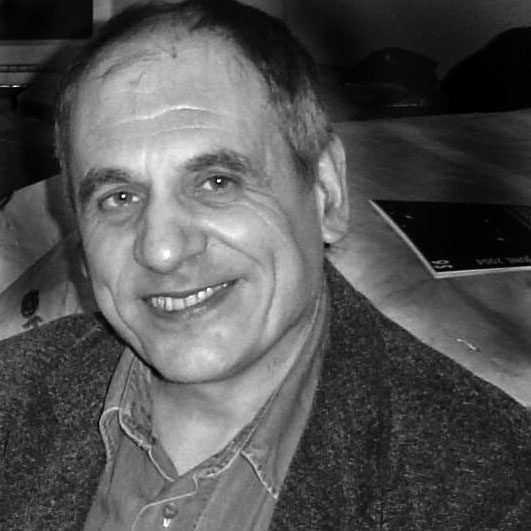
Serguei Ivanovich Blinnikov was born on November the 25th in the city of Okha on Sakhalin island in the Russian Far East. In 1972 he completed his studies in the Astronomy Department of the Faculty of Physics in MSU where he did his diploma and PhD Theses under the supervision of Yakov Borisovich Zel'dovich and Gennary Semionovich Bisnovaty-Kogan. He received his PhD in 1975 with the Thesis titled "Equilibrium and stability of rotating stars". Serguei Blinnikov worked in Space Research Institute till 1979 when he decided to move into Prince Menschikov estate. Here he is now holding the leading researcher position in the Institute of Theoretical and Experimental Physics dividing his time between work there and here in SAI. Blinnikov was a supervisor of three successful PhD candidates.
Research interests of Serguei Blinnikov extend from the models of Dark matter to Supernovae and Gamma-ray bursts. He is actively collaborating with leading SNe research group all over the world - in Europe (MPA Garching and the Stockholm University), the US (UC, Santa-Cruz) and Japan (Tokyo University). So there is little surprize in the fact that Serguei Blinnikov is so interested in studying languages - both human and those of computers.
PhD (1975), DSc. (2000, Non-stationary radiative and hydrodynamic processes in Supernovae). IAU member.
A few important publications:
- Here a new class of GRBs connected with neutron star mergers was predicted:
Блинников С.И., Новиков И.Д., Переводчикова Т.В., Полнарев А.Г., Взрывающиеся нейтронные звёзды в тесных двойных. 1984, ПАЖ, 10, 422 (In English: 1984, Sov.Astr.Lett., 10, 177).
- And here the formation of a hot coronae above the accretion discs swirling around black holes was predicted:
- Bisnovatyi-Kogan G.S., Blinnikov S.I., A hot corona around a black-hole accretion disk as a model for Cygnus X-1. 1976, Sov.Ast.Lett., 2, 191 (также 1976, ПАЖ, 2, 489)
- Bisnovatyi-Kogan G.S., Blinnikov S.I., Disk accretion onto a black hole at subcritical luminosity 1977, A&A, 59, 111
- Here the mirror matter - one of the Dark matter candidates - was considered in full detail for the first time:
Blinnikov S.I., Khlopov M.Y., Possible astronomical effects of mirror particles, 1983, Sov.Ast., 27, 371 (также 1983, АЖ, 60, 632)
- And here is a very useful work on the SNe theory, which clarified a somewhat obscure problem on spectral line effect on the opacity of expanding medium.
Blinnikov S.I., Тhe opacity of an expanding medium, 1996, Ast.Lett., 22, 79
- Here Serguei Blinnikov has - to some surprize - come down to Earth; the paper happened to be important not only for the SNe deflagration theory
but for the front propagation in phase transitions in general - e.g., in fully earthy superheated liquids. As well as in hypothetic quark stars and early Universe.
Blinnikov S.I., Sasorov P.V., Landau-Darrieus instability and the fractal dimension of flame fronts, 1996, Phys.Rev.E, 53, 4827
- Here a few useful approximations were added to the well-known formulae of Dmitry Konstantinovich Nadyozhin.
Blinnikov S.I., Dunina-Barkovskaya N.V., Nadyozhin D.K., Equation of State of a Fermi Gas: Approximations for Various Degrees of Relativism and Degeneracy, 1996, ApJS, 106, 171 (Также Erratum: 1998, ApJS, 118, 603)
- And with this work two astronomers taught mathematicians the right way to compute Edgeworth expansion series used extensively to study how a given
distribution is close to the Gaussian one. According to Wikipedia, the algorithm found by Blinnikov and Moessner nearly ten years ago is still holding
the title of the most effective one.
Blinnikov S., Moessner R., Expansions for nearly Gaussian distributions, 1998, A&AS, 130, 193
Some recent publications:
- Chugai N.N., Blinnikov S.I., Cumming R.J. et al., The Type IIn supernova 1994W: evidence for the explosive ejection of a circumstellar envelope, 2004, MNRAS, 352, 1213
- Sorokina E.I., Blinnikov S.I., Kosenko D.I., Lundqvist P., Dynamics and Radiation of Young Type-Ia Supernova Remnants: Important Physical Processes, 2004, Ast.Lett., 30, 737
- Blinnikov S.I., Rоpke F.K., Sorokina E.I., Theoretical light curves for deflagration models of type Ia supernova, 2006, A&A, 453, 229
Serguei Ivanovich Blinnikov teaches relativistic astrophysics to the students of Moscow Physics and Technology Institute in their 5th year. The course includes fundamentals of GR with a detailed derivation of Schwarzschild and Friedmann metrics. Blinnikov has also lectured "Astrophysics of exploding objects" to Japanese under- and postgraduate students explaining them stellar structure and equilibrium theory, SNe mechanism basics as well as SN remnants gasodynamics and selected topics in relativistic astrophysics.
Serguies Ivanovich is currently supervising two postgraduate students and three PhD candidates as well as a number of undergraduates from MPTI. Although not planning to take on anyone else at the moment, the number of unsolved puzzles in astrophysics guarantees that anyone with an active interest in the field still has chances to work with Blinnikov one day.
More... »
Anastasia Vladilenovna Kasparova
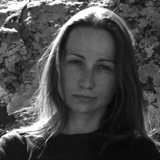
Anastasia Kasparova was born in Moscow on November the 21st and started her studies in MSU in 2001. Five and a half years later, in 2007, she successfully defended her diploma Thesis on "Interstellar medium pressure in galactic discs" and is working in the Group since then as a junior researche.
Research interests of Anastasia lie in the field of extragalactic astronomy - it is not by chance that she works in the group. They include physics and evolution of galaxies, inter-stellar medium, the Local volume, galaxy interaction with the environment and star formation in galaxies.
Anastasia Kasparova is most actively involved in collaboration with the Local Universe research group of the Extragalactic astrophysics and Cosmology lab of SAO.
Publications:
- A. Kasparova and A. Zasov, On the possibility of the long lifetime of molecular (arXiv:1210.5738)
- Kasparova, A. Atomic and molecular gas components in spiral galaxies of the Virgo cluster, Astronomy Letters, 2012, 38, issue 2, p. 63
- Kasparova, A.; Zasov, A. V., The pressure of an equilibrium interstellar medium in galactic disks, 2008, 34, issue 3, p. 152
- Kaisin, S. S.; Kasparova, A. V.; Knyazev, A. Yu.; Karachentsev, I. D. H? survey of the local volume: Isolated southern galaxies, 2007, Astronomy Letters, 33, 283.
- Kasparova, A. V.; Zasov, A. V., Galaxies with anomalously high abundances of molecular hydrogen, 2006, Astronomy Reports, 50, 626.
- Караченцев И.Д., Каспарова А.В., Global Properties of Nearby Galaxies in Various Environments, 2005, Astronomy Letters, 31, 152
Artem Viktorovich Tuntsov
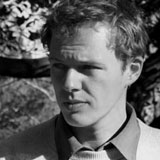
Artyom Tuntsov was born on July the 25th, 1980 in a Moscow suburb. In 1997 he came to the Moscow Uni, where he successfully completed his studies defending his diploma Thesis on gravitational lensing done under the supervision of Dr. Grigory Beskin from SAO. After that, Artem decided to move as far as he could and soon found himself in Australia, where he began his PhD candidature in Sydney Uni with one of the world leading experts on microlensing - A/Prof. Geraint Lewis. In 2006 the PhD Thesis "Statistical inferences of gravitational microlensing" was completed and Artyom came back to Moscow, taking the position of a reseacher in Prof. Zasov's Group.
There was little change to the scientific interests of Artyom in the recent years. They include, in the first place, gravitational lensing in 3D in high optical depth regime - and therefore, its statistical aspects. He is also interested in gravitationally bound structures formation and cosmology in general. Most of the above - from the theoretical and analytical point of view. In addition, Tuntsov is wondering how gravitational lensing by evolving galaxies and their clusters has, over billions of years, affected the CMB fluctuations statistics. That is the field of his current research.
Doctor of Philosophy (2007, PhD Thesis titled "Statistical inferences of gravitational microlensing").
Selected publications:
- Tuntsov A.B., Lewis G.F., Microlensing in Phase space - I. Continous propagation of variability moments, 2006, MNRAS, 370, 91
- Tuntsov A.B., Lewis G.F., Microlensing in Phase space - II. Correlations analysis, 2006, MNRAS, 370, 105
- Tuntsov A.B., Walker M.A., Lewis G.F., Measuring transverse velocities in gravitationally lensed extragalactic systems using an annual parallax effect, 2004, MNRAS, 352, 125
- Conn B.C., Lane R.R., Lewis G.F., Gil-Merino R., Irwin M.J., Ibata R.A., Martin N.F., Bellazzini M., Sharp R., Tuntsov A.V., Ferguson A.M.N., The AAT/WFI survey of the Monoceros Ring and Canis Major dwarf galaxy - I. From l = (193-276)°, 2007, MNRAS, 376, 939
- Pshirkov M. S., Tuntsov A.V., Postnov K.A, Constraints on the massive graviton dark matter from pulsar timing and precision astrometry. Submitted to Phys.Rev.Lett. (arXiv:0805.1519).
- Conn B.C., Lane R.R., Lewis G.F., Irwin M.J., Ibata R.A., Martin N.F., Bellazzini M., Tuntsov A.V., The AAT/WFI survey of the Monoceros Ring and Canis Major Dwarf galaxy: II. from l = (280 – 025)deg. Accepted to MNRAS (arXiv:0808.2534)
Arthur Davidovich Chernin

chernin@sai.msu.ru
+7 495 939 1622
Research Professor
Education
M.Sci., St.-Petersburg Polytechnic University
Ph.D., Ioffe PhysTech Institute, St.-Petersburg
Dr.Sci., Pulkovo Observatory
Prior Positions
Ioffe PhysTech Institute; Herzen University, St.-Petersburg; Turku University, Finland.
Research Interests
Professor Chernin focuses his research on theoretical cosmology and physics of galaxies. Over the years he has contributed to the hydrodynamics of galaxy formation, to the dynamics of galaxies and galaxy systems, to the studies of physical effects of dark matter and dark energy. He also authored or co-authored several books published in Russian, English, Spanish, Japanese.
Selected Recent Papers
- Chernin A.D. Dark energy and the universal antigravitation. Physics–Uspekhi, 51, 253, 2008.
- Chernin A.D., Karachentsev I.D., Valtonen M.J., et al.: The very local Hubble flow: simulating the transition from chaos to order. Astronomy and Astrophysics 467, 933, 2007.
- Chernin, A. D.; Teerikorpi, P.; Baryshev, Yu. V. Non-Friedmann cosmology for the Local Universe, significance of the universal Hubble constant, and short-distance indicators of dark energy. Astronomy and Astrophysics 456, 13, 2006.
- Teerikorpi, P.; Chernin, A. D.; Baryshev, Yu. V. The quiescent Hubble flow, local dark energy tests, and pairwise velocity dispersion in a Ω = 1 universe. Astronomy and Astrophysics 440, 791, 2005.
- Chernin A.D., Karachentsev I.D., Valtonen M.J., et al.: The very local Hubble flow: computer simulations of dynamical history. Astronomy and Astrophysics 415, 19, 2004.
- Chernin A.D., Nagirner D.I., Starikova S.V.: Growth rate of cosmological perturbations in standard model: exact analytical solution. Astronomy and Astrophysics 399, 19, 2003.
- Chernin A.D.: Cosmic vacuum and the flatness problem in the concordance model. New Astronomy 8, 79, 2003.
- Chernin A.D., Teerikorpi P., Baryshev Yu.V.: Why is the Hubble flow so quiet? Advances in Space Research 31, 459, 2003.
- Chernin A.D.: Physical vacuum and cosmic coincidence problem. New Astronomy 7, 113, 2002.
- Chernin A.D., Santiago D.I., Silbergleit A.S.: The interplay between gravity and quintessence: a set of new GR solutions. Physics Letters A 294, 79, 2002.
- Baryshev Yu.V., Chernin A.D., Teerikorpi P.: The cold local Hubble flow as a signature of dark energy. Astronomy and Astrophysics 378, 729, 2001.
- Chernin A.D.: Using Hubble Space Telescope images to identify straight segments in galaxy nuclear spirals. MNRAS 318, L7, 2000.
- Chernin A.D., Lehto H., Valtonen M.J., Hein\"am\"aki P.: Three-body chaos. Progr. Space Phys. 10, 321, 2000.
- Chernin, A.D., Dolgachev, V.P., Domozhilova, L.M.: Wide triplets of galaxies: collapse on spatial scale of 1 Mpc. MNRAS 319, 851, 2000.
- Chernin A.D.: Spiral arms with straight segments. MNRAS 308, 321-332, 1999.
- Hein\"am\"aki P., Chernin A.D., Lehto H., et al.: Chaos in three-body dynamics: Kolmogorov-Sinai entropy. MNRAS 310, 811-822, 1999.
- Karachentsev I.D., Chernin A.D., Byrd G.G. and Valtonen M.J.: Triple systems of galaxies Fund. Cosmic Phys. 20, 383-475, 1999.
- Chernin A.D., Valtonen M.J.: Intermittent chaos in three-body dynamics. New Astron. Rev. 42, 41, 1998.
Selected Books
- P. Teerikorpi, M. Valtonen, K. Lehto, H. Lehto, G. Byrd, A. Chernin. Evolving Universe and the Origin of Life. Lecture notes in physics. 2008. Springer, N.-Y. – London.
- G. Byrd, A. Chernin, M. Valtonen. 2007. Cosmology: Foundations and Frontiers, “URSS”, Moscow
- E.A. Tropp, V.Ya. Frenkel, A.D. Chernin. Alexander A. Friedmann: the man who made the Universe expand. 2006, 1993, Cambridge University Press; 2006, Moscow ,“Com-Kniga”; 1988, Moscow, “Nauka”.
- A.D. Chernin. Physics and Stars. 2004, 2002, Moscow, “URSS”; 1983, Moscow, “Nauka”.
- A.D. Chernin. Physics of Time. , 2008, “Terra”, Moscow, 1990, Tokio; 1988, Moscow, “Mir”; 1988; 1986, Moscow, “Nauka”.
Oxana Viktorovna Abramova
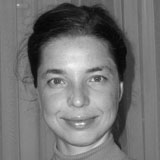
Oxana Abramova, born December 30 1970 in Moscow. Starting from young years she was enthusiastic of astronomy, attended the Moscow city astronomy group for schoolchildren. At the same time began her interest in extragalactic astronomy. During school years she took part in several observations, in particular at Gissar observatory in Tadzhikistan, in Crimea observatory, and in SAO. Graduated with honours in 1994 from Astronomy division of Physical Department of Moscow State University, she started work in Shternberg Astronomy Institute at MSU in Star astrophysics division and in 2004 received PhD degree for work on Two-phase winds in binary systems. At the same time she was teaching and writing popular papers on astronomy.
In 2007 after creation of Extragalactic Astronomy division, Oxana Abramova was enlisted to it and started work in star formation in galaxies.
Some publications:
- Aleksandrova (Abramova), O.V., Bychkov, K.V. Dust Formation in Binaries with OB and WR Components in a Two-Phase Stellar-Wind Model. Astron. Rep., Volume 45, Issue 4, pp. 281-286, 2001.
- Abramova, O.V., Averin, P.V. and Bychkov, K.V. The Nonthermal Radio Emission of WR 140 in a Model with Colliding Two-Phase Winds. Astron. Rep., Volume 47, Issue 1, pp. 31-37, 2003.
- Zasov, A.V. and Abramova, O.V. The star-formation efficiency and density of the disks of spiral galaxies. Astron. Rep., Volume 50, Issue 11, pp. 874-886, 2006.
- Abramova, O.V. and Zasov, A.V. The gas density and "volume" Schmidt law for spiral galaxies. Astron. Rep., Volume 52, Issue 4, pp. 257-269, 2008.
- LSB-galaxies review (in Russian)
Ol'ga Kasyanovna Sil'chenko
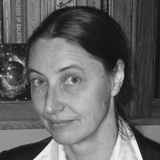
Lyudmila Nikolayevna Petrochenko


